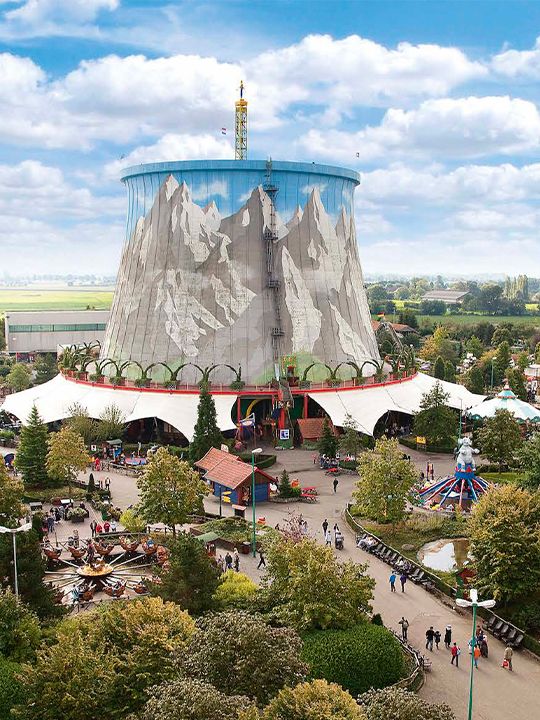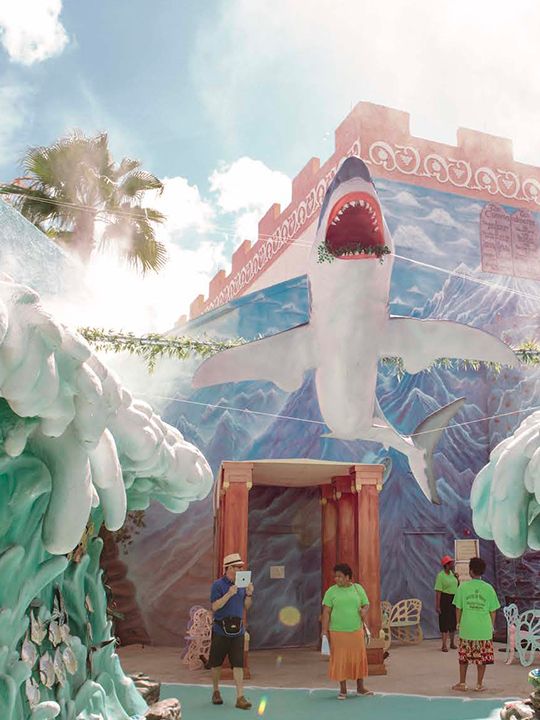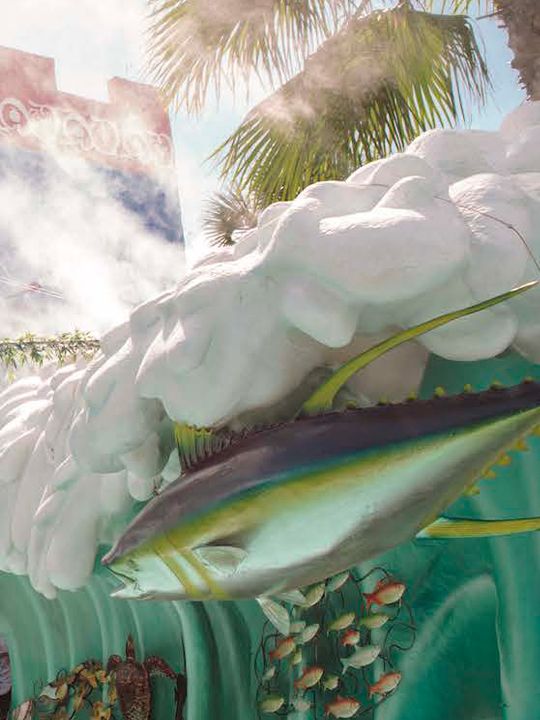Holy Land experience
The first Christian theme park is based in Orlando, Florida, established in 2001 close to the largest Disneyland park! Its founder is Marvin Rosenthal, who was born a Jew but converted to Protestantism and then became a pastor. The highlight of the park is a king-size model of the Jerusalem of the first century. Otherwise, HLE seems intended more for educational purposes than entertainment, with a museum that houses the world’s fourth largest collection of biblical antiquities. Of course, one can attend services as well as courses on Biblical exegesis and antique cooking. The large auditorium houses a reconstruction of the crucifixion of Christ. To go higher still, go to Kentucky, where you will find a Noah’s ark built to the gigantic dimensions called for in the Bible: Ark Encounter includes wax dummies of Noah’s family, a whole menagerie of carved animals, and plenty of nooks to explore with the family.

Wunderland Kalkar
Germany, strongly influenced by its environmental convictions, turned its back on the same nuclear power which supplied the German miracle with energy, and so a Dutch contractor bought the Kalken power station, located near the Dutch border, from the government for four million marks. In 1995 he opened the first – and only, as far as we know – nuclear (or at least environment) themed park. You will find no less than forty classic attractions under the shade of generators and reactors which adorn the park: a large loop-de-loop, a Ferris wheel, flying rides, roller coasters and many other rides. The cooling tower, which can be climbed, is entirely painted with a scenery of mountains and sur-rounded by a ring of fir trees, as if to ward off a less bucolic past.

No less than 40 attractions under the shadow of nuclear reactors

Edo Wonderland
Want to walk in a Japanese print? The tour of Edo Wonderland (Nikko Edamura in Japanese) has been offered by plenty of tour operators in Japan since its creation in 1986. The Edo period of Japanese history extends from 1603 to the modernizing Meiji Restoration of 1868. Visitors can walk around 500,000 m2 of an old-fashioned Japanese village and surrounding countryside, with sloping-roofed wooden houses, craft stalls and open wooden bridges. The village is swarming with tight-faced samurai with their curved sabres, geisha-like women, and country folk straight out of The Seven Samurai. Speaking of ghosts, Edo Wonderland is home to a temple haunted by demonic, digitized spirits, not to mention the very popular Ninja Trick Maze, a Japanese-style labyrinth which we are told is pretty tricky to find one’s way out of before the park’s closing time.
Dwarf Empire
Less concerned about what is politically or humanely correct, in 2009 China opened in Yunnan (a mountainous region which borders with Vietnam and Burma) an amusement park which would make most Westerners startled. The World Eco Garden of Butterflies and the Dwarf Empire is in fact a reduced-size world of one hundred people with restricted growth, dressed in traditional Chinese costume or Western outfits, singing and dancing both traditional and hip-hop songs. At the end of the day, the workers return to their homes, which are located inside the park and adapted to their size. In short, the Chinese have made on a large scale what Fort Boyard started with Passe-Partout.
Grutas Park
After being freed from the Soviet yoke in 1990, Lithuania carried out a mass "retirement" of communist statues and emblems, storing them all over the country. A decade later, former wrestler Viliumas Malinauskas recovered these cumbersome memories and in 2011 created a 100 per cent Stalino-Soviet landscaped park. In Druskininkai, 130 km south-west of the capital Vilnius, visitors to Grutas Park can inspect gulag barracks and monitor their surroundings from the top of the watchtowers. And when the kids want to get away from the barbed wire, they can go to a more "neutral" playground and a mini-zoo. But the ambiance is ensured by the many imposing statues of Stalin, Lenin or Felix Dzerzhinsky (founder of the Cheka, the political police in charge of tracking down the enemies of Bolshevism). Visitors can follow several attractive routes, depending on the scenery: the “tour of terror", the "totalitarian tour" and, of course, the “death tour”.

Popeye's Village
In the end, Malta is the destination chosen to be the home of American sailor Popeye’s new theme park. Popeye's Village was originally built in 1979 – 50 years after the character was created – for the purpose of an all-American musical comedy by Robert Altman, starring Robin Williams and Shelley Duvall. After the film was released, Anchor Bay, on the northwest coast of the island, was left with a whole village of pretty wooden houses. The Maltese decided to turn the film set into an amusement park, with extras disguised as Popeye, Olive Oyl, J. Wellington Wimpy or Bluto strolling through streets lined with palm trees and surrounded by the small houses used during filming.

UDI deputy for Seine-et-Marne Yves Jégo, driven by his passion for everything imperial, dreams of opening by 2023 a Napoleon-themed park in the town of Montereau-Fault-Yonne, seat of the Emperor’s victory over the Austro-Wurtembergs on February 18, 1814 (regularly re-enacted on location). Like his hero, Jégo has a vision: 56 hectares, 244 million euros funded partly by foreign investors (Chinese in particular), and a selection of attractions validated by a committee of ten historians. This would include a virtual reality helmet which will place the visitor at the heart of a Napoleonic battle, complete with a model 1777 rifle (careful, virtual but still heavy), only accurate within 100 metres and needing twelve steps to reload, which allows a maximum of only one shot per minute. In any case, in the best imperial tradition, the project is subject to a plebiscite, so the inhabitants of the municipality have been invited last year to give their opinion on the project. To be continued, with interest...






